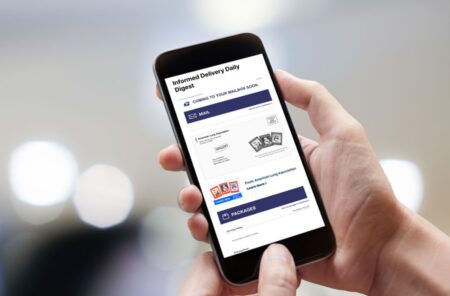Google has significantly tightened security measures and no longer allows less secure apps to access Gmail accounts by default. This decision was made to protect users’ accounts from potential security threats. Instead of enabling less secure apps, it’s recommended to use more secure methods for accessing your Gmail account. Here are a few alternatives:
Use OAuth 2.0:
Google encourages developers and users to use OAuth 2.0 for secure authentication and authorization. Many email clients and applications support OAuth 2.0, and it’s a safer method to grant access to your Gmail account without sharing your password. Check if your email client or application supports OAuth 2.0, and if it does, use it for account setup.
Enable Two-Factor Authentication (2FA):
Two-factor authentication adds an extra layer of security to Gmail account. Even if you use an app or device that Google considers less secure, having 2FA enabled provides an additional safeguard. You’ll receive a code on your phone or another device to verify your identity when logging in.
To enable 2FA on your Gmail account:
- Go to your Google Account settings: https://myaccount.google.com/
- Navigate to the “Security” section.
- Under “Signing in to Google,” select “2-Step Verification” and follow the prompts to set it up.
Use Gmail’s Recommended Apps:
Google provides a list of recommended apps and services that are considered secure for accessing Gmail. To find and configure these apps:
- Go to your Google Account settings: https://myaccount.google.com/
- Navigate to the “Security” section.
- Under “Third-party apps with account access,” click on “Manage third-party access.”
Here, you can review and manage which apps have access to your Gmail account.
It’s important to prioritize security when accessing your email account, as it contains sensitive information. Avoid using less secure methods whenever possible, and opt for more secure alternatives like OAuth 2.0, two-factor authentication, and Google’s recommended apps.
Use app passwords to allows less secure apps in Gmail
Google encourages users to use more secure methods like OAuth 2.0 and two-factor authentication (2FA) rather than app passwords to access Gmail accounts. However, if you still need to use an app password for a specific reason, you can generate one. App passwords are typically used for older or less secure apps that don’t support modern authentication methods like OAuth 2.0. Here’s how you can generate and use an app password in Gmail:
Sign in to Your Google Account:
- Go to your Google Account settings: https://myaccount.google.com/
- Click on “Security” button in the left sidebar.
Generate an App Password:
- Under the “Signing in to Google” section, you’ll find “App passwords.” Click on “App passwords.”
Sign In Again:
- You may be prompted to sign in again to verify your identity.
Generate an App Password:
- Under “App passwords,” click on “Select app” and choose the app or device for which you want to generate an app password. If the specific app is not listed, select “Other (Custom name).”
- Click “Select device” and choose the device type (e.g., Windows Computer, Mac, etc.).
- Click “Generate.”
View and Use the App Password:
- You will see a 16-character app password on the screen. This is the password you will use to sign in to the app.
- Copy this password, and then paste it into the app’s password field or settings where you configure your email account.
Access Your Account:
- Once you’ve entered the app password in your email client or app, it should allow you to access your Gmail account.
Manage Your App Passwords:
- If you no longer need an app password or want to revoke access for a specific app or device, you can do so from the same “App passwords” section in your Google Account settings.
App passwords are less secure than modern authentication methods like OAuth 2.0, so it’s recommended to use them only when there are no other secure alternatives available for the specific app or device you’re using. Whenever possible, consider updating your app or email client to one that supports more secure authentication methods.
Creating an app password on Smartphones
you could generate an app password for your Gmail account on a mobile device, but it usually involves using a web browser on your mobile device to access your Google Account settings. Here’s how you can create an app password on a mobile device:
Open a Web Browser:
- On your mobile device, open a web browser (e.g., Chrome, Safari) and go to the Google Account settings page: https://myaccount.google.com/.
Sign in to Your Google Account:
- If you’re not already signed in, enter your Google email address and password to log in.
Access Security Settings:
- In the Google Account settings, tap on “Security” in the navigation menu.
Generate an App Password:
- Scroll down to the “Signing in to Google” section and tap on “App passwords.” If you don’t see “App passwords,” you may need to enable 2-Step Verification first.
Select App and Device:
- You’ll be prompted to sign in again for security purposes. After signing in, you’ll see the option to select the app and device for which you want to create an app password. Choose the relevant options from the dropdown lists.
Generate the App Password:
- Tap “Generate.” Google will generate a unique 16-character app password for the selected app and device.
Use the App Password:
- To generate or copy the app password by Google.
Configure the App or Email Client:
- Open the app or email client on your mobile device where you want to use the app password.
- In the account settings or during the account setup process, when prompted for your password, paste the app password you copied from the Google Account settings.
Complete the Setup:
- Follow the app or email client’s prompts to complete the setup. It should now allow you to access your Gmail account using the app password.
Keep your app passwords secure and don’t share them with anyone. If you no longer need an app password or want to revoke access for a specific app or device, you can do so from the “App passwords” section in your Google Account settings. Additionally, consider using more secure authentication methods like OAuth 2.0 whenever possible, as app passwords are less secure.


